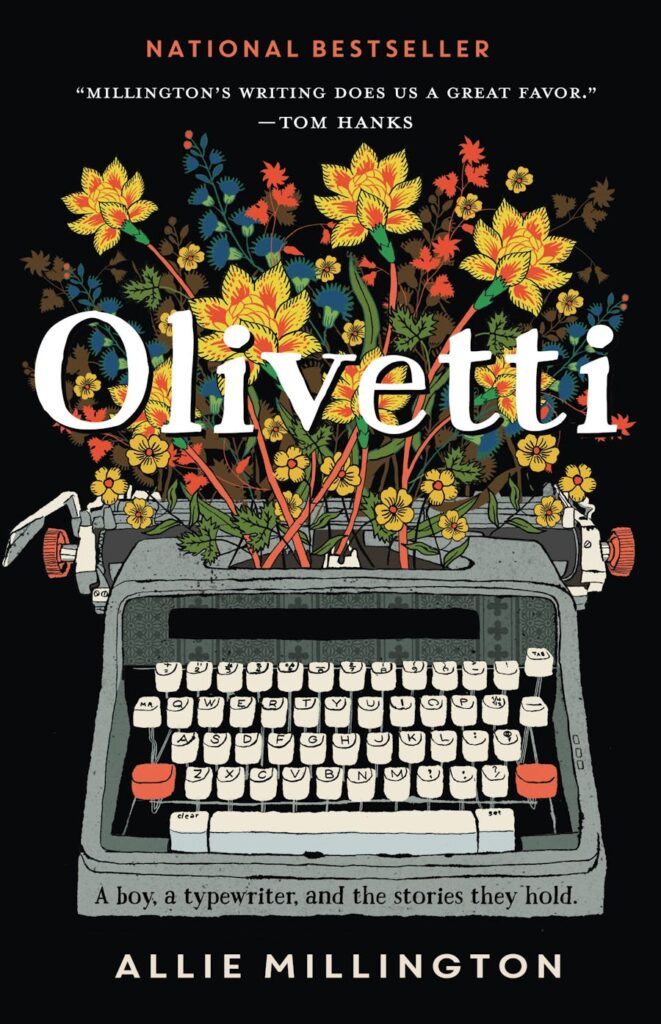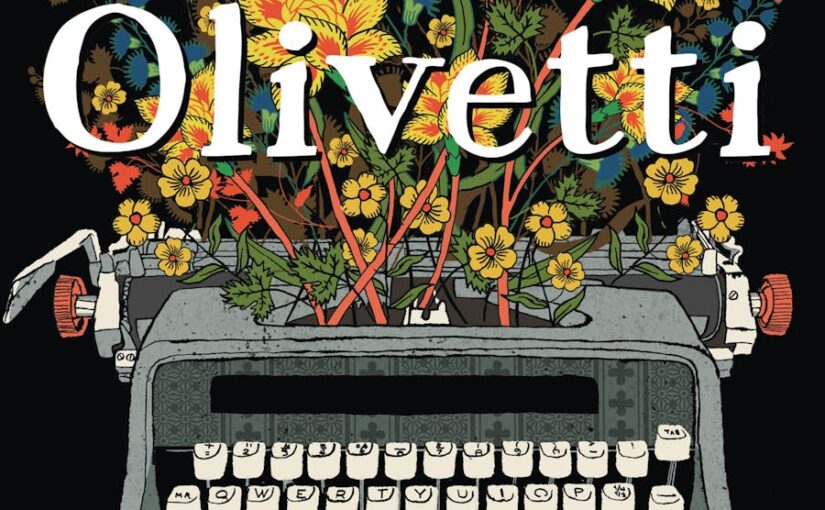If these walls could talk. The aspect of inanimate objects communicating or having personalities is a fun way to think isn’t it? The walls of a school would have a different story than that of a hospital and a home would be something much more personal. Olivetti is the story of a typewriter and how it came to communicate with the family where it’s lived for years. Kids, a typewriter is a manual device that would create documents when the keys are pressed down. The hammer would physically move the specific letter that you pressed before raising a thin film of ink that would allow the indention of said key to create the letter on the paper upon impact. It’s also a go-to for some creative types who like the tactile process of creating manuscripts and find the clacking sound of keys rapidly and correctly hitting their intended destination soothing, cathartic, and an enhancement to the process. As a novel, Olivetti is a charming throwback of an mglit book that asks you to suspend belief, and then effortlessly brings you along if you chose to believe that a typewriter has a personality all its own.

One of the biggest disarming factors about Olivetti for us, and probably most readers, is the book’s presentation. The chapters vary from their perspective and are named according to who is experiencing that specific part of the story. Olivetti is the typewriter and Ernest is the son of Beatrice, the lady who has used the typewriter the most. Her children have used the typewriter as they were growing up, with each one having various degrees of success with it. Olivetti knows these people and their basic characteristics but has kept their thoughts and processes to itself.
All of this changes when Olivetti finds itself being transported and eventually left in a pawn shop. Olivetti knows that Beatrice is taking it, but can’t fathom why the person who uses it the most would get rid of it. It communicates with another typewriter once it’s there and tries to figure out where the people that it knows the best are. Olivetti knows that something is very wrong and its suspicions are confirmed when the police show up at the pawn shop.
Bea’s family knows that something is wrong too. Their paths lead them to the pawn shop and Ernest puts a piece of paper in Olivetti’s feed and something cool, scary or hallucinogenic happens. Words start to appear on the paper. The keys are moving and a disembodied typewriter (Olivetti) starts communicating with Ernest. It’s against the code, but it communicates and leaves Ernest wondering if his mother is a ghost and has taken up residence in their family typewriter that’s now available for anyone to purchase.
This is where you need to suspend belief. Assuming that you’ve done this and have made it to this point in the book you will be hooked. It’s charming and the relationships between the two play out like a buddy cop film to a degree; as the two try to figure out where she went and what caused her to sell the typewriter for such a specific, and low amount of money. Once Ernest accepts the fact that Olivetti is able to think and communicate on its own, and that this all isn’t some silly prank video, the two start an unlikely, and highly impossible friendship.
The chapters are not typical in that some are very short, maybe a page and a half, while others might be seven pages long. Either way, it’s an approachable length, but the short chapters build upon the totality of the book and establish the confusion or immediacy that is happening in the story. The result is a page-turning effect that you hear about in blurbs as they describe something great in literature. “It’s a page-turner of a summer book”, for example, and there are moments in Olivetti where you’ll be rewarded with fast-paced instances of that. Yes, fast-paced interactions between a tween and his typewriter with a soul. Again, suspend your disbelief, come out into the world of fun mglit with a surprising amount of the feels surrounded by science-fiction with a heart and you’ll have a grand ole time.
There are affiliate links in this post.





 Facebook
Facebook Twitter
Twitter Flickr
Flickr GooglePlus
GooglePlus Youtube
Youtube